This Biscoff buttercream tastes just like our favorite cookie! This recipe is made with cookie butter to give it that deliciously warm, spiced brown sugar flavor we know and love.
This recipe uses my American buttercream recipe as a base and adds a generous amount of cookie butter to give this frosting an incredible flavor.

How to Make Biscoff Buttercream
To make sure this Biscoff frosting turns out as amazing as possible, let’s walk through each step together.
I’ve also included a video tutorial of the process below.
Step 1: Beat the Butter & Cookie Butter Together
Beat the unsalted butter and cookie butter on a medium-high speed with a hand mixer for a minute until smooth.
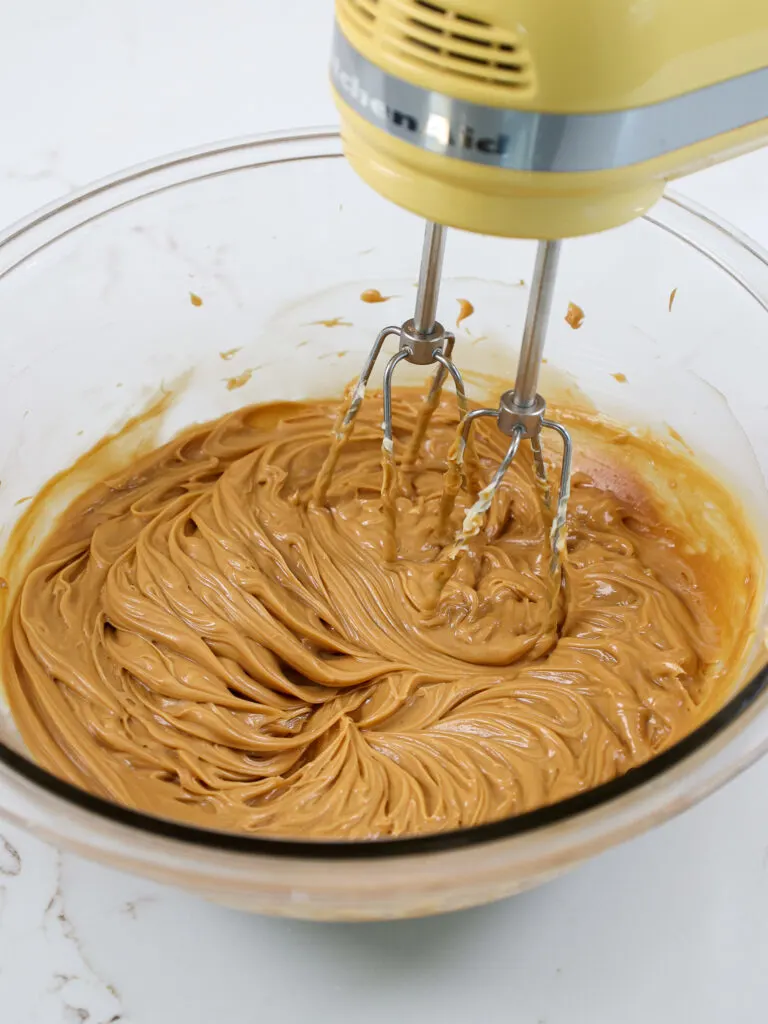
Step 2: Mix in All the Good Stuff
Next, add in the vanilla extract and salt. Beat on low until the ingredients are incorporated.
Then slowly mix in the powdered sugar and heavy cream on a low speed. Scrape the sides and bottom of the bowl as need with a rubber spatula.

Step 3: Give the Frosting an Extra Stir to Make it Super Smooth
Beat on low until the ingredients are fully combined and the desired consistency is reached.
Stir the frosting by hand with a rubber spatula once it’s made for a minute or two to make the frosting super smooth.
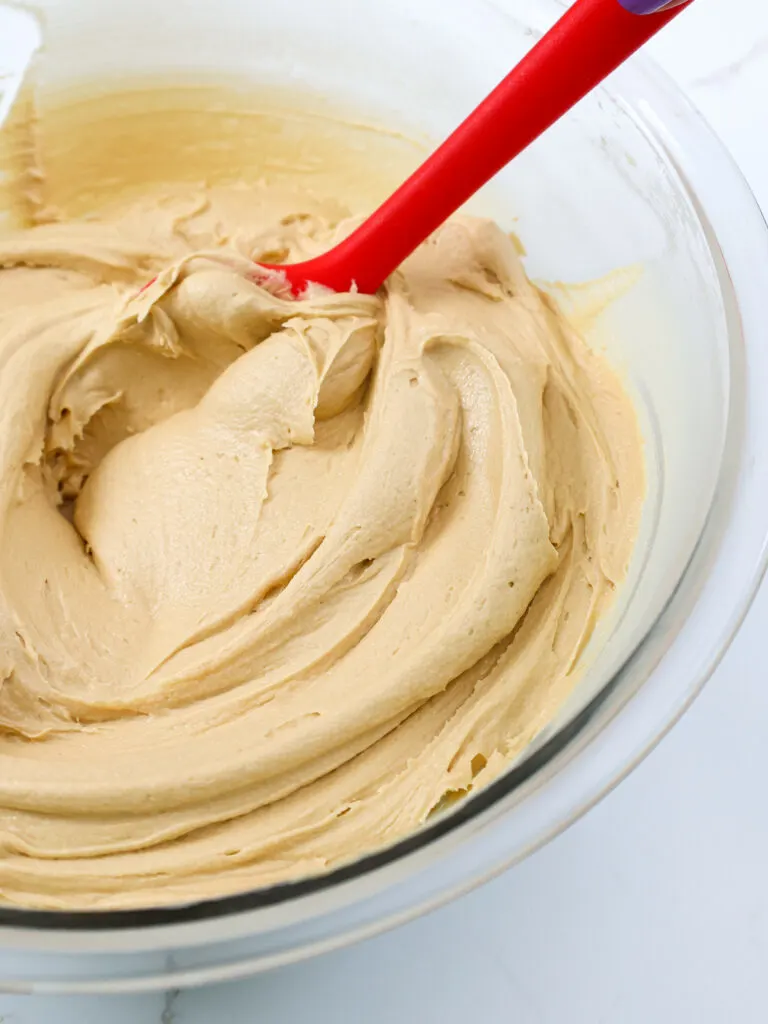
Cover the buttercream flush with plastic wrap or immediately place it in a piping bag. Otherwise, the frosting will crust if it’s left sitting out!
My Secret Ingredient – Smooth Cookie Butter
The key to packing this buttercream with Biscoff flavor is cookie butter!
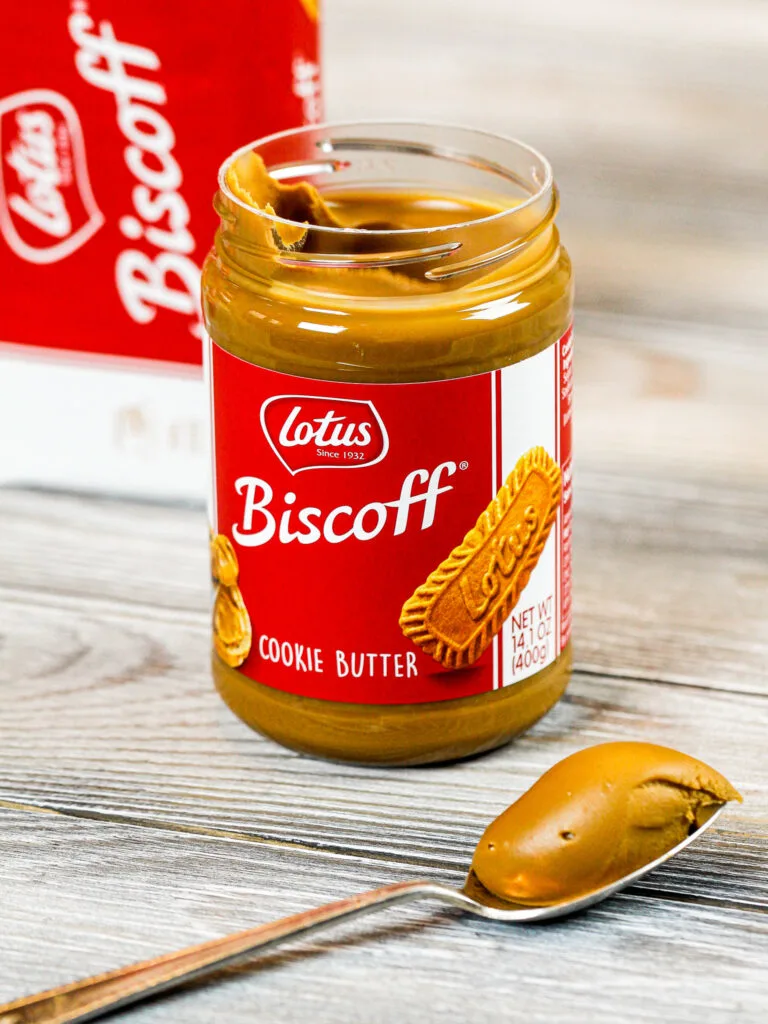
I like to use the Lotus Biscoff brand of cookie butter, but any brand will work. Just make sure it’s a smooth, creamy cookie butter rather than chunky.
While chunky cookie butter adds nice texture, it can make this frosting hard to smooth onto cakes and difficult to pipe with.
Substitutions & Swaps in This Biscoff Buttercream Recipe
Some swaps and substitutions that can be made in this frosting recipe include:
- Unsalted Butter – If you only have salted butter on hand, you can use it in place of the unsalted butter. Just be sure to omit the salt that this frosting recipe calls for.
- Cookie Butter – Cookie butter is a must in this recipe, and any brand will work! Just make sure it’s creamy cookie butter.

How Much Frosting Does this Recipe Make?
This recipe makes about 4 1/2 cups of frosting. You can also halve, double, or triple this recipe as needed.
A triple batch can be made in a 5 qt Kitchen Aid Mixing bowl.
I usually make 1 batch to frost two dozen cupcakes with large swirls or to fill and frost a six-inch layer cake.
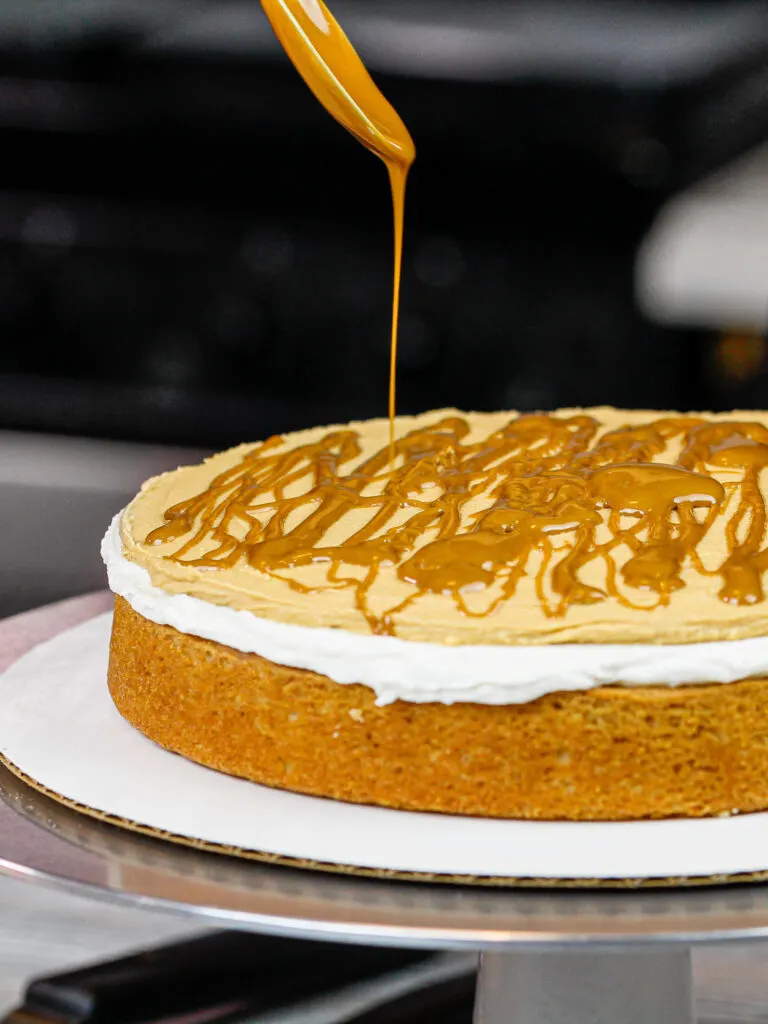
What Can I Frost with Biscoff Buttercream Frosting?
The sky’s the limit when it comes to using this frosting. Cakes, cupcakes, cookies, macarons, you name it!!
I’ve used it to frost my Biscoff layer cake, vanilla cupcakes, French macarons, and even my buttercream cookies!
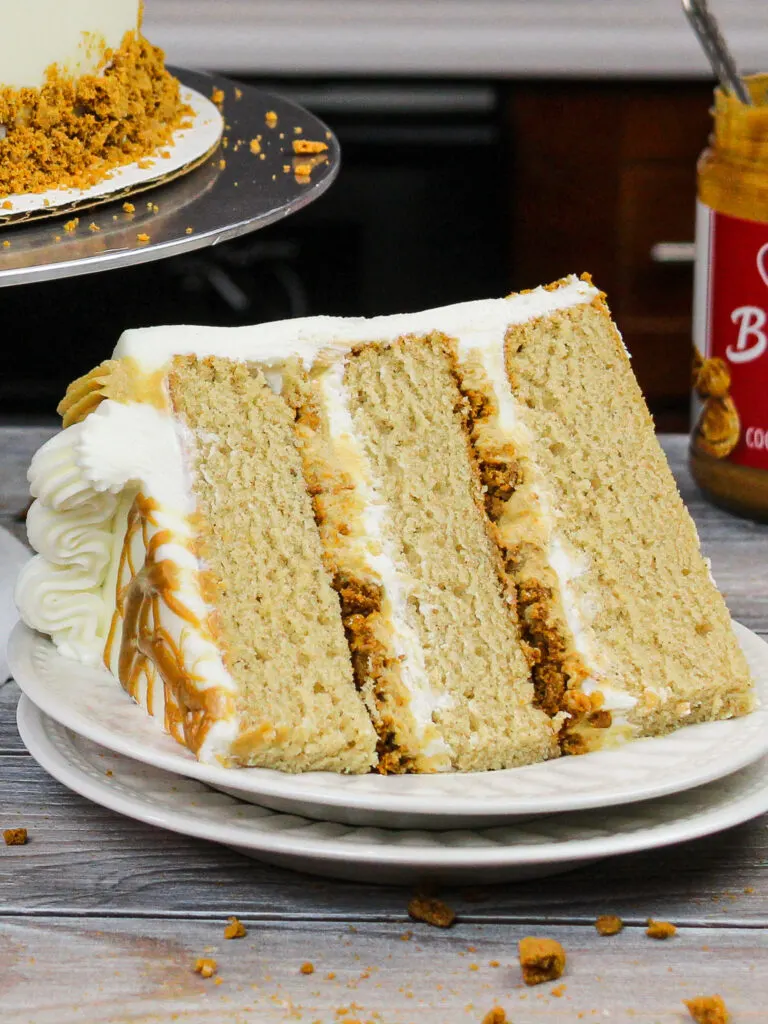
Biscoff Frosting Troubleshooting
While this recipe is pretty straight forward, sometimes people do run into issues making it.
One of the hardest parts is getting the consistency of your buttercream just right.
There are few different factors that influence the consistency of your frosting.
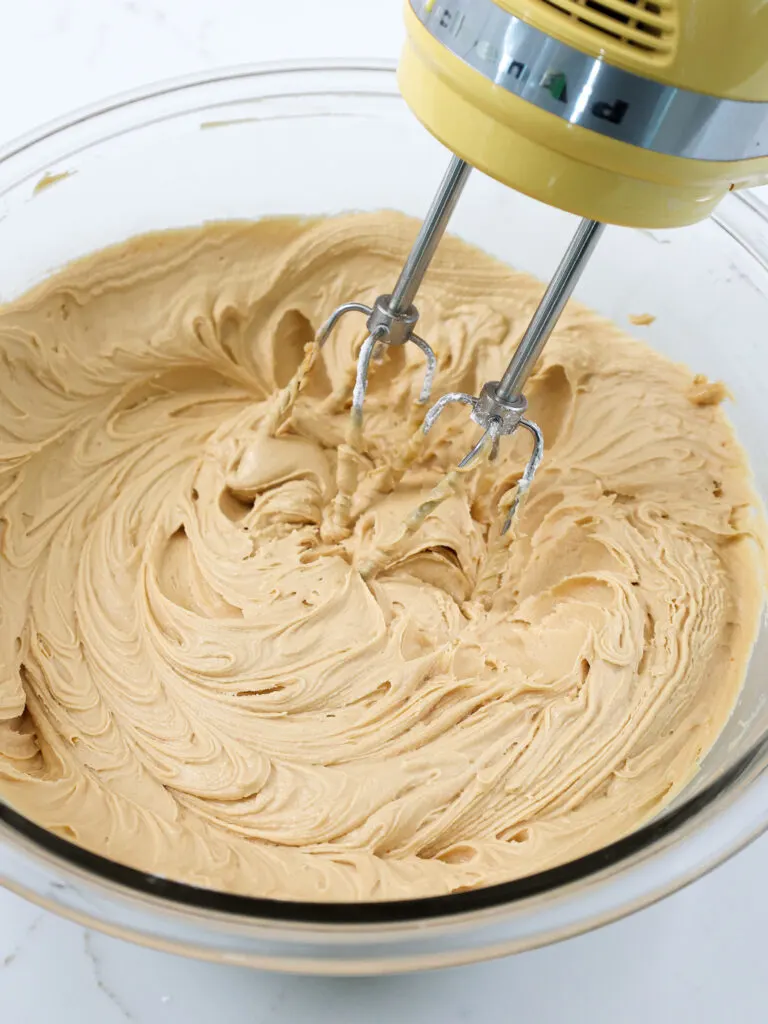
It’s a delicate balance between the temperature of your kitchen, the brand of butter you use, the temperature of your butter, and the amount of heavy cream you use.
The easiest way to see if your frosting is the right consistency is the spatula test! I check the consistency of every batch of frosting I make using this test.
To test your frosting, firmly press a rubber spatula into your frosting and pull directly up. Turn the spatula right side up and look at the frosting on the tip.
The frosting should form a somewhat soft peak that has a little curl on the end. It’s stiff enough to hold up that curl, but soft enough to create that little curl.

Unfortunately, I don’t have a picture of this test with this buttercream, but hopefully the picture above using my vanilla buttercream helps you visualize what we’re looking for.
If the frosting is too stiff and sticks straight up, add in additional heavy cream (1 Tbsp at a time).
If the frosting is too thin, add in more powdered sugar (quarter of a cup at a time).
Or if your frosting looks broken, add in more room-temperature butter, 1 Tbsp at a time until it comes back together.
You can also chill it in the fridge in 10-minute intervals if you think your butter was too warm.
After each adjustment, be sure to retest the frosting with your spatula before using it.
Can You Color Biscoff Buttercream?
This buttercream can easily be colored darker but doesn’t work well as a base for light or vibrant colors.
It naturally has a tan color, so it would be a great base to make a deep purple, green, blue, or black.
I recommend using gel food coloring to make these deep shades. The color will also get darker if you make the buttercream in advance and let it sit at room temperature overnight.

Tips for Making the Best Biscoff Buttercream
- Make sure your butter is at room temperature before making this frosting.
- If your powdered sugar contains cornstarch (most brands in the US do) there’s no need to sift your powdered sugar.
- If you’re making this Biscoff frosting for a cake, mix the buttercream on the lowest speed at the end of the process for a couple minutes. This helps remove any extra air that might have been incorporated during the mixing process.
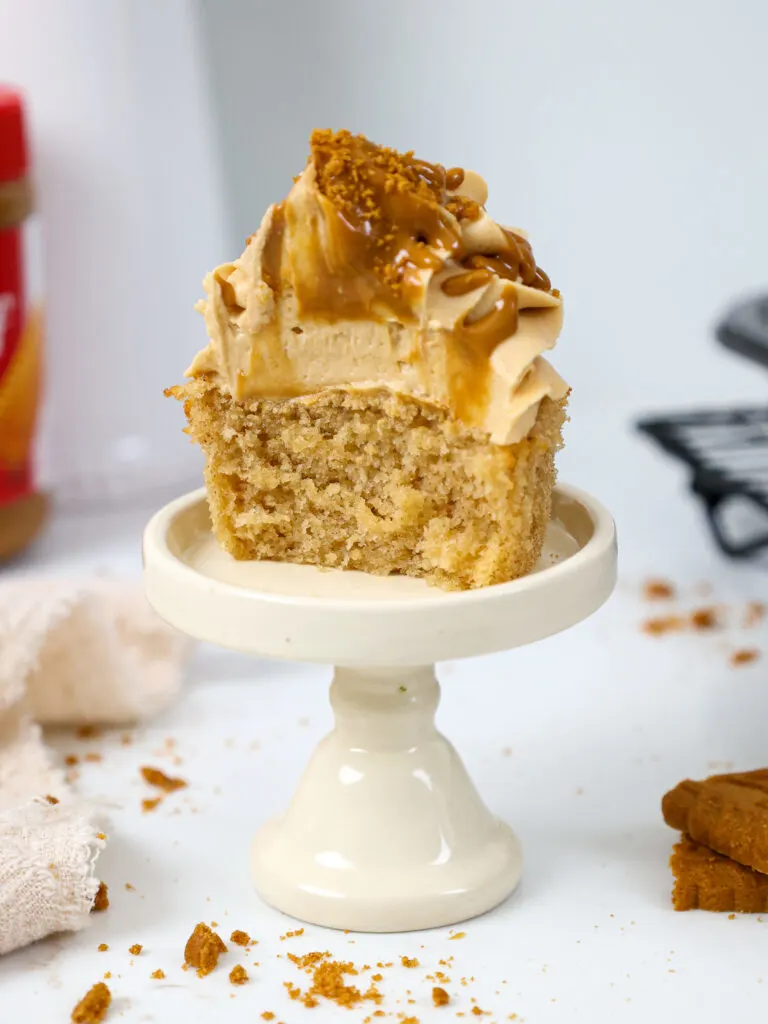
Does This Biscoff Buttercream Need to be Refrigerated?
Below are some tips for storing this frosting in case you make it in advance or have leftovers:
- Make this frosting ahead of time or save any leftover frosting. It can sit at room temperature for a day or be stored in an airtight container in the fridge for up to a month.
- Can you freeze Biscoff buttercream? Yes! Store this frosting in the freezer for up to 3 months. Just be sure to give it a good stir once it thaws to make it nice and smooth again.
- A frosted cake can last in the fridge for a week, or in the freezer for a month. The buttercream locks in the moisture and keeps the cake fresh and delicious!
Let Me Know What You Think!
If you make this Biscoff buttercream recipe, I’d love to hear what you think of it! Please leave a rating and comment below.
Don’t forget to tag me @chelsweets and #chelsweets so that I can see your amazing creations on social media.
Other Recipes You Might Like:
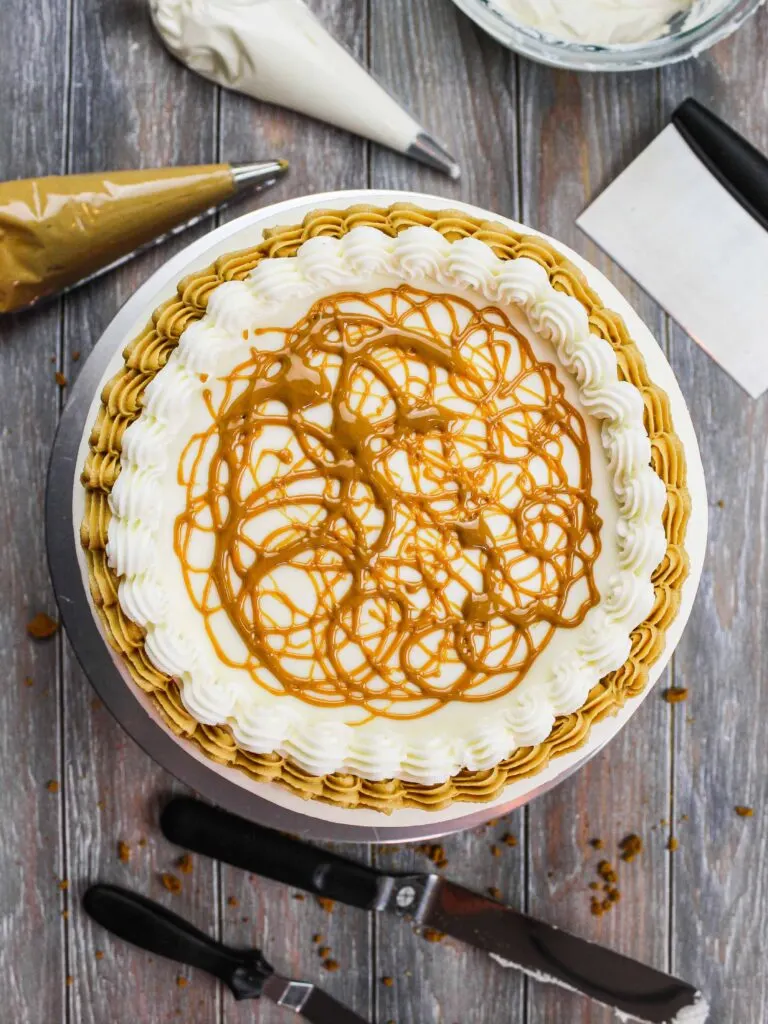
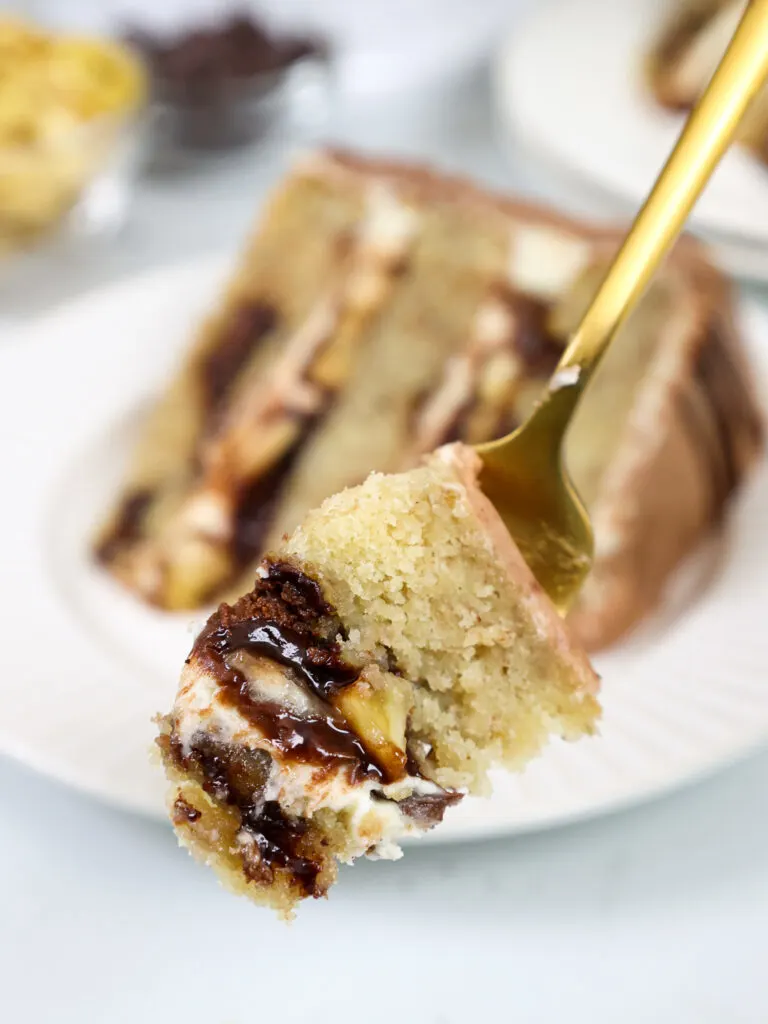

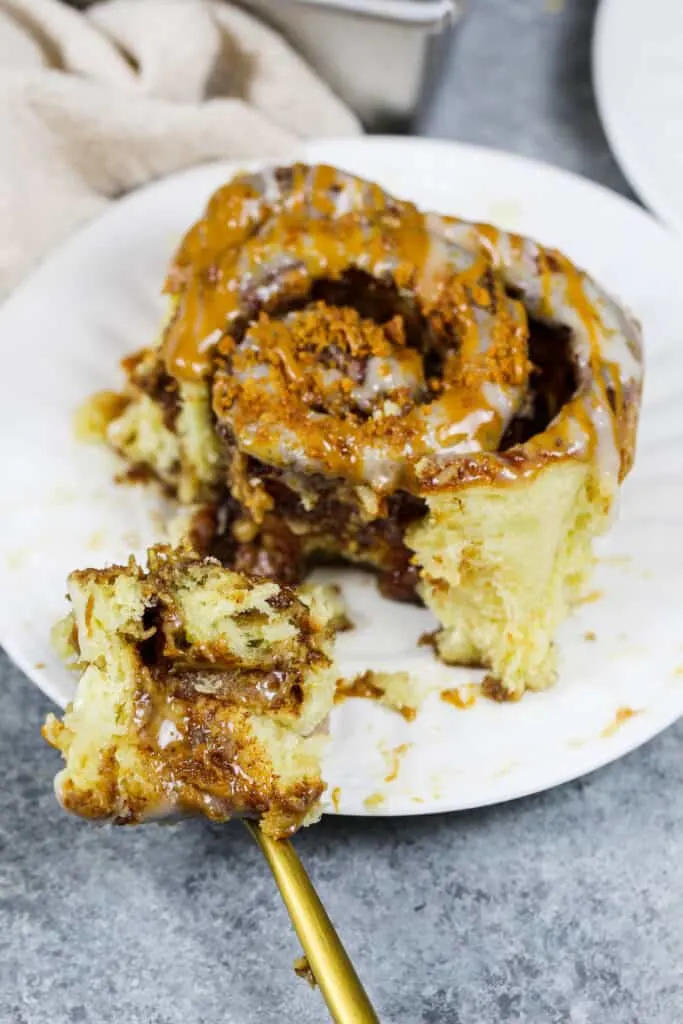
Biscoff Buttercream Frosting
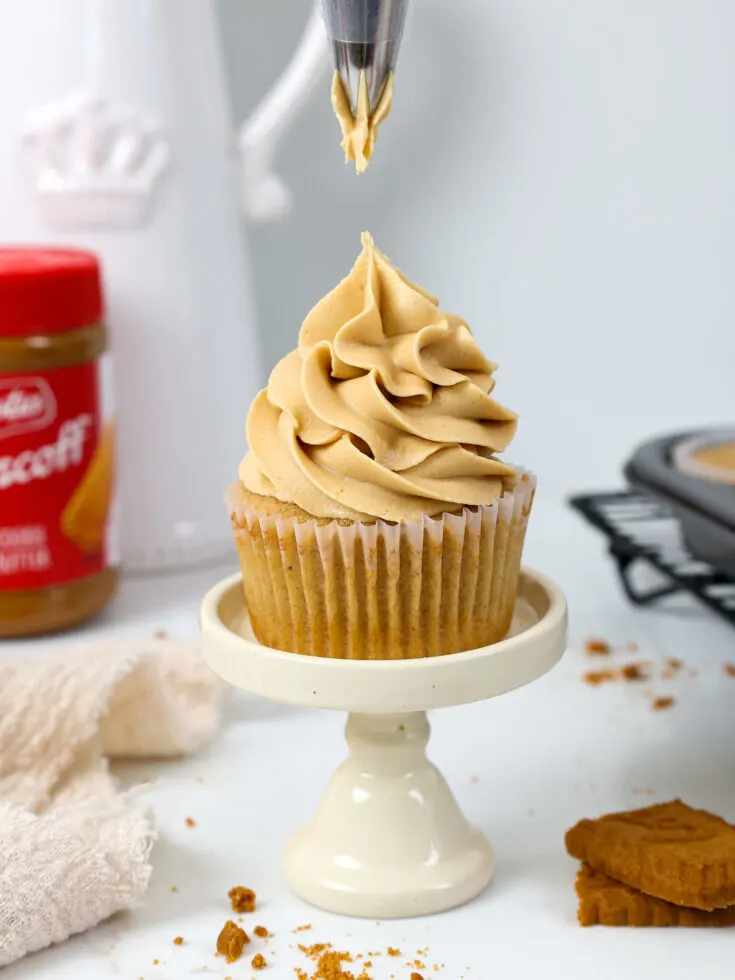
This biscoff buttercream tastes just like our favorite cookie! It uses cookie butter to give this frosting that deliciously warm, spiced brown sugar flavor we know and love!
Ingredients
Biscoff Buttercream
- 1 cup unsalted butter, room temperature (226g)
- 1/2 cup cookie butter (195g)
- 1 tsp vanilla extract (4g)
- 1/2 tsp fine salt (2g)
- 3 1/2 cups powdered sugar (454g or a 1 lb. box)
- 1/4 cup heavy cream or milk (60g)
Tools
Instructions
Biscoff Buttercream:
- Beat 1 cup of unsalted butter and 1/2 cup of cookie butter on a medium speed for 1 minute with a hand mixer until combined and smooth.
- Add in 1 tsp vanilla extract and 1/2 tsp salt. Mix on a low speed until the ingredients are incorporated.
- Gradually mix in 3 1/2 cups of powdered sugar and 1/4 cup of heavy cream on a low speed. Scrape the sides and bottom of the bowl as needed.
- Once fully mixed, if the frosting seems too thick, add in additional heavy cream (1 Tbsp at a time). If the frosting is too thin, add in more powdered sugar (quarter of a cup at a time). If your frosting looks broken, add in more room-temperature butter, 1 Tbsp at a time until it comes back together.
- Stir the frosting by hand with a rubber spatula once it's made for a minute or two to make the frosting super smooth.
- Either cover the frosting flush with plastic wrap to prevent crusting or place it in a piping bag fit with your favorite frosting tip. This buttercream can sit at room temperature for a day, be stored in the fridge for up to a month in an airtight container or stored in the freezer for 3 months.
Notes
Yield
This recipe makes about 4 1/2 cups of frosting. If needed, this recipe can be halved, doubled or tripled. A triple batch will fit/can be made in a 5 qt Kitchen Aid Mixing bowl.
I usually make 1 batch to frost two dozen cupcakes with large swirls or to fill and frost a six-inch layer cake.
Tips for Making the Best Biscoff Buttercream
- Make sure your butter is at room temperature before making this frosting.
- If your powdered sugar contains cornstarch (most brands in the US do) there's no need to sift you powdered sugar.
- If you are making this Biscoff frosting for a cake, mix the buttercream on the lowest speed at the end of the process for a couple minutes to get out any extra air that might have been incorporated during the mixing process.
Making This Biscoff Buttercream in Advance and Storage Tips
- Make this frosting ahead of time or save any leftover frosting! It can sit at room temperature for a day or be stored in an airtight container in the fridge for up to a month.
- This frosting can also be stored in the freezer for up to 3 months! Just be sure to give it a good stir once it thaws to make it nice and smooth again.
- A frosted cake can last in the fridge for a week, or in the freezer for a month. The buttercream locks in the moisture and keeps the cake fresh and delicious!
Nutrition Information
Yield
4Serving Size
1Amount Per Serving Calories 993Total Fat 66gSaturated Fat 34gTrans Fat 1gUnsaturated Fat 28gCholesterol 144mgSodium 408mgCarbohydrates 101gFiber 0gSugar 91gProtein 4g

Beth
Thursday 18th of July 2024
I naturally pick up typos ? twice in this article same paragraph, (as shown below), YOU needs to be corrected to YOUR.
If your powdered sugar contains cornstarch (most brands in the US do) there’s no need to sift you powdered sugar.
Chelsweets
Sunday 11th of August 2024
Appreciate you letting me know Beth! Just updated those, thanks!!
Mimi
Friday 19th of January 2024
What did u use to drizzle on top? ? heated cookie butter?
Chelsweets
Saturday 20th of January 2024
Hi Mimi,
It is warmed up cookie butter! I put a little bit in a small piping bag, heat it up in the microwave until it's a fluid consistency, then drizzle it on the top :) Hope that helps, happy baking!
Katy
Wednesday 20th of December 2023
Would this work to fill and frost a Yule log? Would it keep in the fridge for a couple of days ok? Thanks!
Chelsweets
Friday 22nd of December 2023
Hi Katy,
It should work great for that, and the frosting can be kept in the fridge for up to 2 weeks! Hope that helps, happy baking!!
Biscoff Cream Cheese Frosting (Cookie Butter Frosting) | Somebody Feed Seb
Tuesday 5th of September 2023
[…] Biscoff Buttercream Frosting […]
Steph
Wednesday 19th of July 2023
Im making cookies with buttercream frosting, do I have to refrigerate this because of the buttercream? Or can the buttercream be left out of the fridge?
Steph
Monday 24th of July 2023
@Chelsweets, Great thanks so much for the help :) cant wait to try this!
Chelsweets
Sunday 23rd of July 2023
Hi Steph,
Great question! They can sit out at room temperature for up to 2 days, but I'd recommend storing them in the fridge after that. Hope that helps, happy baking!